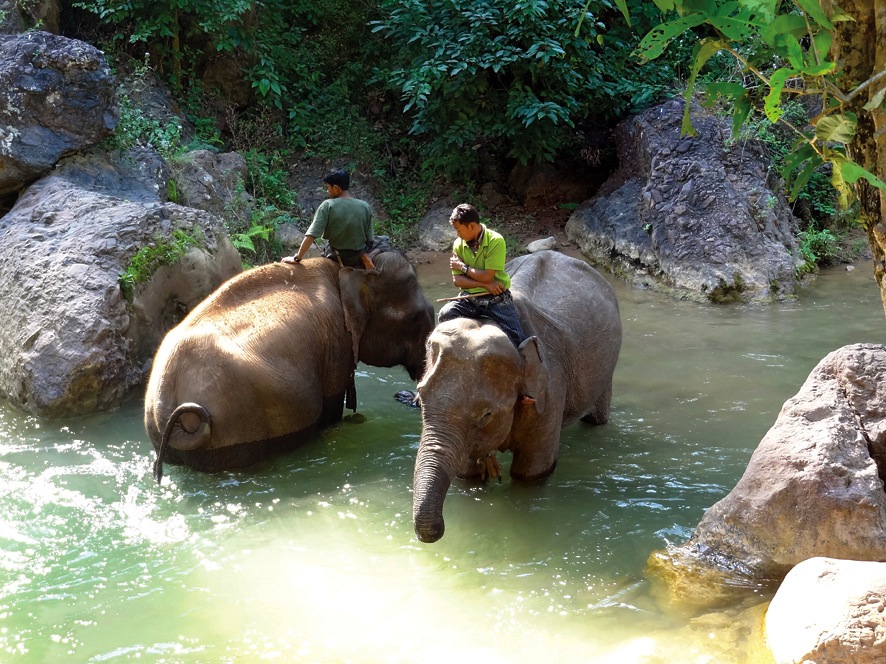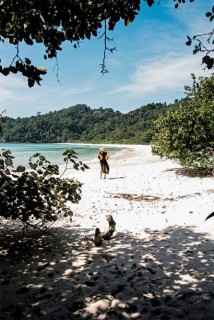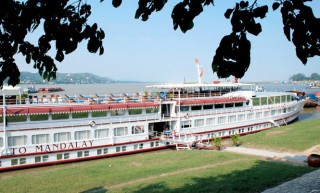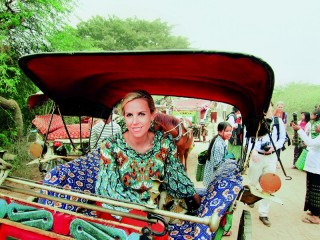A family-run elephant sanctuary in Myanmar’s Shan Hills is working to provide not only a comfortable and safe retirement for its animals, but also new opportunities for its village neighbors
Loose-fitting fisherman’s trousers and loofah-like brushes await us at a muddy stream, as does a pair of pink-eared pachyderms. Smiling, their mahouts give us a crash course in elephant-scrubbing, which involves a lot rubbing and lathering with a natural soap extracted from a local vine. The water is cold, the streambed is rocky, and by the time our 30-minute session is done, we’re soaked up to our chests. I can’t remember having so much fun.
Visitors have been washing elephants at the Green Hill Valley Elephant Camp since October 2011, when a local couple decided to turn their dream of ecologically responsible tourism into reality. Tin Win Maw and her husband Htun Htun Wynn had worked in the tourism in Myanmar for almost two decades at that point, and Maw had grown up with elephants. Her uncle, U Ba Kyaw Than, is a retired forestry veterinarian who specialized in elephants; she had spent her school holidays with him in the forest.
Three years ago, the timing was right for the couple to link their knowledge of the area and their enthusiasm for Myanmar’s largest animal to a project that involved forest conservation, animal care, and community service. Green Hill Valley is the result, hosting up to 30 visitors a day for personal elephant interaction, nature trekking, tree planting, and refreshments.
The need for elephant sanctuaries in Myanmar is great. The country has the highest population of domesticated (i.e., working) elephants in the world, mostly employed by the timber industry. It also has the second- largest population of wild Asian elephants after India as well as the world’s largest continuous areas of natural habitat for the animals (more than India and Thailand combined).
Green Hill Valley began as a family operation, with Maw and Wynn as cofounders and Maw’s veterinarian uncle as project manager. The location, selected after careful consideration, is Magwe village, about 45 minutes by car from Kalaw in the mountains of southern Shan State. The resident elephants include two of the family’s own animals, plus five retired elephants from the Ministry of Forestry. Green Hill Valley’s 20 hectares are not a lot of land for seven elephants, so the animals have roaming rights in the adjoining Wet Pyu Ye forest reserve, giving them an additonal 60 hectares over which to stretch their legs.
The location had been a major timber logging camp in the 1960s, employing more than 20 working elephants at maximum capacity; the environment, with its forests of teak andbamboo, is not an unfamiliar one for Maw’s animals. Their comfort is reinforced by the presence of their mahouts, the caregivers who had tended to them during their working lives. Each elephant has his or her personal mahout, and each mahout lives at the camp with his wife and children.
The mahouts are a comfort to camp visitors as well. When we edged into the stream, they lent a hand to help us navigate the rocky bottom. They let us know when bath time was over for the elephants by clambering onto their backs and urging them out of the water and back to camp. When we emerged, dripping, they proffered towels to help us dry off before exchanging our soaked trousers for the dry pants we had left on shore.
Then we followed staff members to a re-forestation area, where we helped plant seed-lings from the camp’s nursery. Our seedlings were teak, but the plants may also be silver oak, cassia, or other fast-growing regional trees, depending on what forestry experts suggest. Every visitor gets to plant a tree as a lasting souvenir of his or her visit. Since elephants can eat 150 kilos of vegetation a day, replanting is a logical part of the camp’s ecological equation and reforestation is a core focus of Green Hill Valley.











